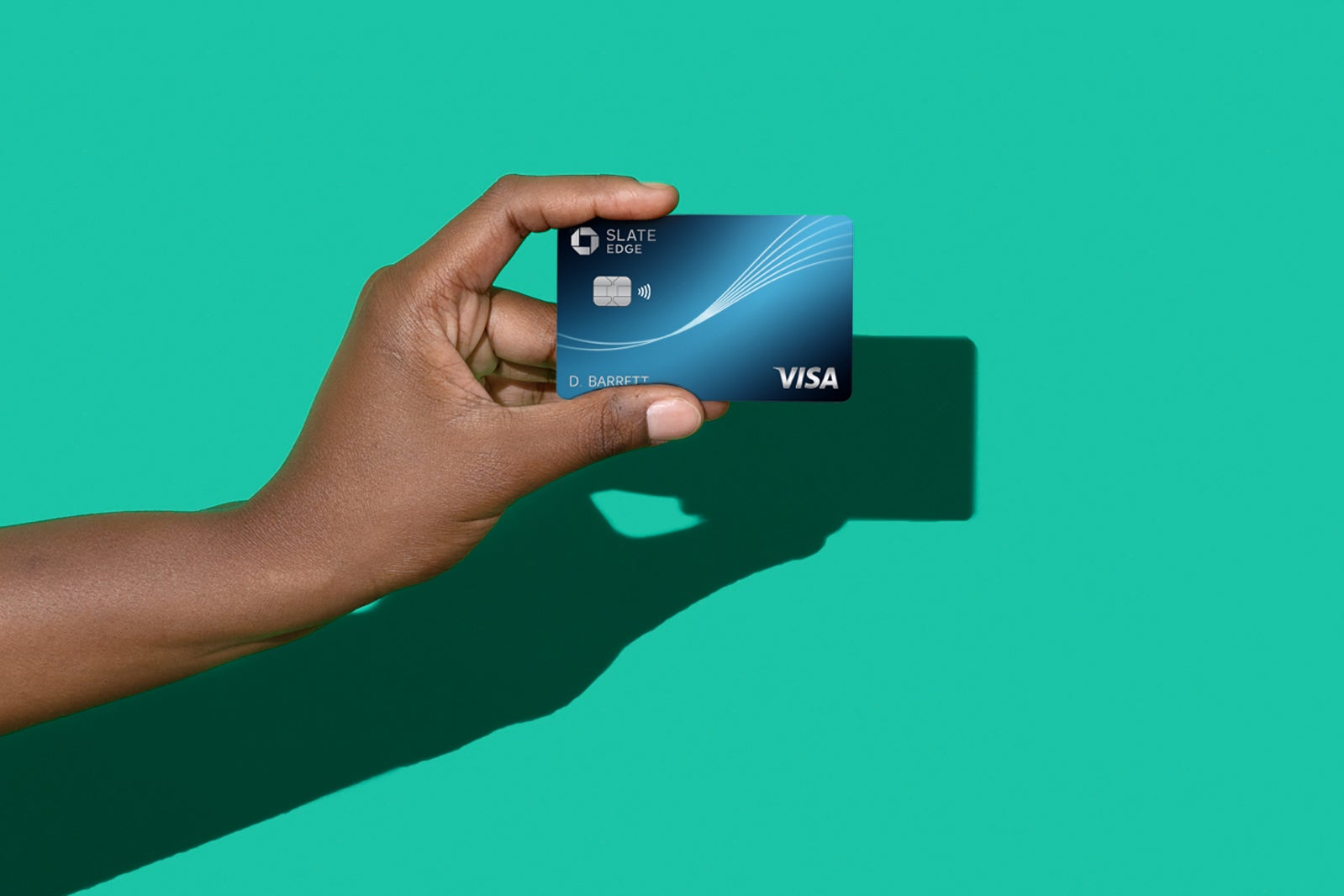Chase Slate Edge card review: Reduce debt and raise your credit score
Editor’s note: This is a recurring post, regularly updated with new information and offers.
Chase Slate Edge overview
The Chase Slate Edge℠ is tailored to consumers who want to improve their financial profile by reducing their credit card debt or raising their credit score. This card comes with a lengthy introductory annual percentage rate (APR) period to help you avoid interest for 18 months (then a variable APR of 20.49–29.24%), plus several other incentives after you make consistent on-time payments. Card rating*: ⭐⭐⭐
*Card rating is based on the opinion of TPG’s editors and is not influenced by the card issuer.
Here at The Points Guy, we know that the right credit card can unlock a whole suite of benefits and rewards that are simply not available when you use a debit card instead.
But there’s one major caveat: In order to avoid credit card interest fees, you must first pay your balance on time and in full. Therefore, if you currently have credit card debt, your first step should be to prioritize reducing your account balance.
Fortunately, there are tools to help you avoid an exorbitant amount of interest and late fees. One of these is the Chase Slate Edge credit card, which has no annual fee and is designed specifically for those who want to reduce their debt and raise their credit score over time.
Approved applicants typically have a credit score of 670 or higher.
We’ll review the Chase Slate Edge to see if it’s the best card for those looking to pay down debt.
The information for the Chase Slate Edge has been collected independently by The Points Guy. The card details on this page have not been reviewed or provided by the card issuer.
Chase Slate Edge pros and cons
| Pros | Cons |
|
|
Chase Slate Edge welcome offer
The Chase Slate Edge doesn’t come with a traditional welcome offer, but new cardholders can be considered for a credit limit increase after spending $500 in the first six months and making on-time payments. This isn’t a great welcome offer, but it’s better than nothing.
Credit-building cards usually don’t come with a substantial welcome offer, so I don’t view the Slate Edge negatively because of this.

It also offers an introductory APR on purchases and balance transfers (then a variable APR of 20.49–29.24%), however, which is useful for those trying to eliminate high-interest debt.
Related: The top no-annual-fee credit cards with a 0% introductory APR
Chase Slate Edge benefits
While you won’t earn any points or cash back with the Chase Slate Edge, this card is intended to help rebuild your credit from the ground up.
As mentioned, there’s a 0% introductory APR period on purchases and balance transfers for the first 18 months from account opening (then a variable APR of 20.49%-29.24%). This means you can transfer your account balance from your existing credit cards to the Chase Slate Edge and enjoy a sweet 0% interest rate for a limited time.

While you’ll face an introductory balance transfer fee of $5 or 3% of the amount of each transfer, whichever is greater during the first 60 days (then $5 or 5% of the amount of each transfer, whichever is greater thereafter), this 18-month period gives you time to strategically pay off your balance as quickly as possible without accruing any other interest.
After the introductory period, you’ll face a variable APR of 20.49%-29.24% on any remaining balance. Fortunately, the Slate Edge will automatically consider you for a 2% APR reduction each account year if you spend $1,000 by your next account anniversary and make on-time payments, until your APR reaches the prime rate plus 9.74%.
Finally, Chase offers user-friendly tools such as Credit Journey and My Chase Plan to help you manage your debt and track progress toward your financial goals.
To sum it up, while you won’t earn any enticing rewards with this card, it’s more important to focus on reducing your debt and avoid any ancillary fees first — and the Chase Slate Edge delivers the tools you need to do that.
Related: 6 things to do to improve your credit
Which cards compete with the Chase Slate Edge?
Several simple starter cards compete with the Chase Slate Edge; here are a few options I recommend:
- If you want more rewards: The Citi Double Cash® Card (see rates and fees) has no annual fee but offers cardholders the opportunity to earn valuable cash-back rewards. You earn 1% when you make a purchase and another 1% when you pay off your balance for those purchases. That’s a considerable 2% reward rate on all your purchases, which can certainly add up to more money in your pocket over time. To learn more, read our full review of the Double Cash.
- If you have a low credit score: You may want to consider a secured credit card, like the Capital One Platinum Secured Credit Card. This card allows you to define your credit limit by putting down a fully refundable deposit of up to $1,000. You’ll be automatically considered for a credit line increase after six months, incentivizing users to hone in on their credit usage strategies and rebuild their credit scores. To learn more, read our full review of the Capital One Platinum Secured.
- If you want cash back: The Chase Freedom Flex® offers cardholders the ability to earn 5% cash back on rotating quarterly categories (up to $1,500 in combined purchases each quarter), 5% on travel purchased through Chase Travel℠ and 3% on dining at restaurants (including takeout and eligible delivery) and at drugstores. To learn more, read our full review of the Chase Freedom Flex.
For additional options, check out our full lists of the best secured cards and best starter cards.
Read more: What is a secured credit card?
Is the Chase Slate Edge worth it?
If one of your immediate goals is to reduce credit card debt, the Chase Slate Edge can be a crucial tool to unlock financial freedom once and for all. I view it as a great option if you’re trying to rebuild your credit score. Just note that you won’t earn cash-back, points or miles on your purchases.
Bottom line
The Chase Slate Edge can help you rebuild your credit and establish healthy credit habits, allowing you to move on to bigger and better credit cards that can help you earn maximum rewards on all your purchases.
The card’s lengthy introductory APR period (then a variable APR of 20.49–29.24%), plus other incentives to help you make on-time payments, make it a worthy addition to any beginner’s wallet.
Related: The best time to apply for these popular Chase credit cards based on offer history





